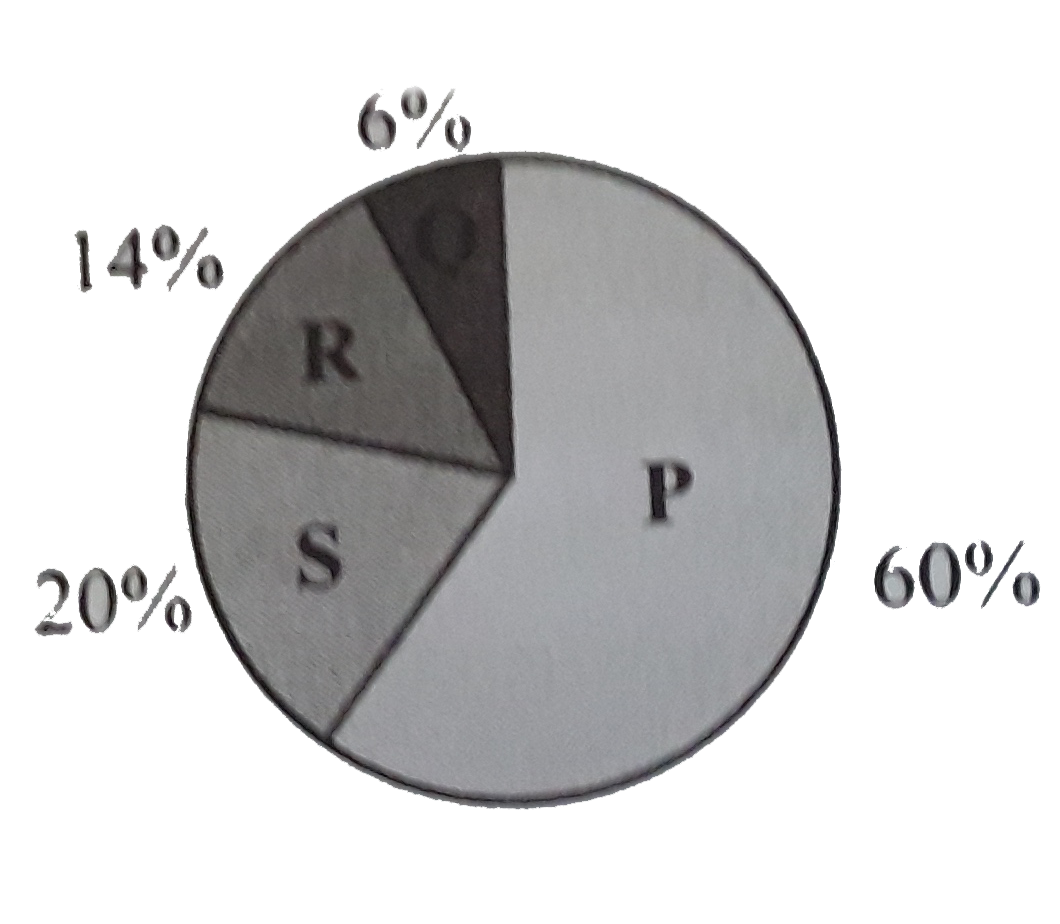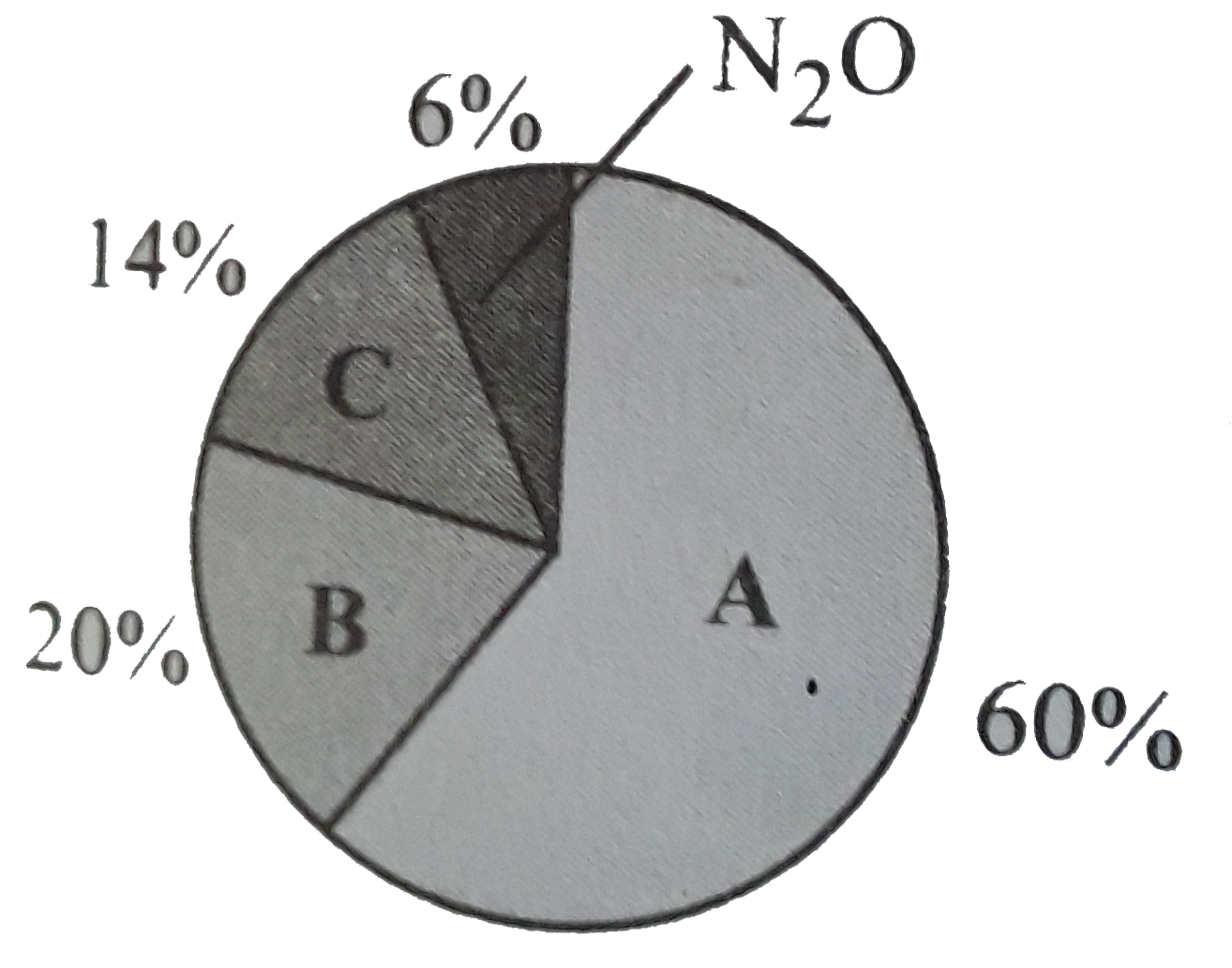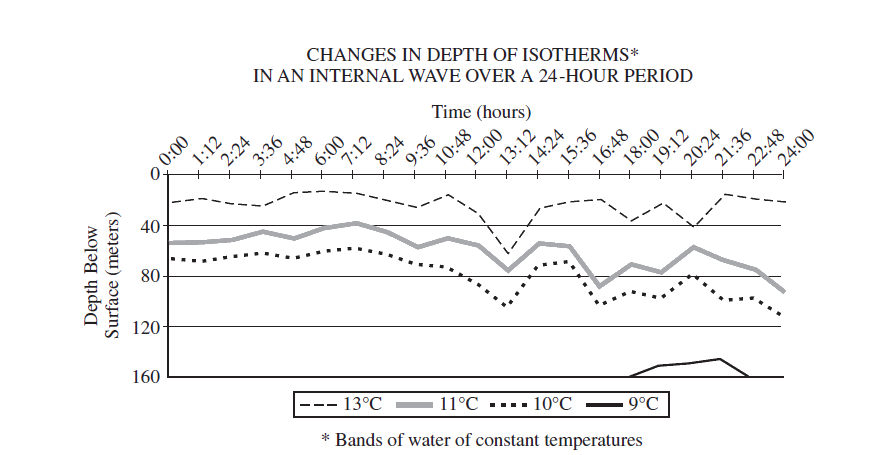'Indiscriminate human activities have strengthened the greenhouse effect resulting in Global Warming''. Give the relative contribution of various Green House Gases in the form of a pie chart and explain the fate of the energy of sunlight reaching the earth’s surface contributing towards Global Warming.
Step-by-Step Solution:
1. Understanding the Greenhouse Effect:
- The greenhouse effect is a natural process that warms the Earth's surface. It occurs when the Sun's energy reaches the Earth, and some of this energy is reflected back to space, while the rest is absorbed and re-radiated by greenhouse gases.
2. Human Activities Contributing to Global Warming:
- Indiscriminate human activities, such as burning fossil fuels and deforestation, have increased the concentration of greenhouse gases in the atmosphere, thereby strengthening the greenhouse effect and leading to global warming.
3. Identifying Greenhouse Gases:
- The primary greenhouse gases contributing to global warming include:
- Carbon Dioxide (CO2)
- Methane (CH4)
- Nitrous Oxide (N2O)
- Chlorofluorocarbons (CFCs)
4. Relative Contribution of Greenhouse Gases:
- To illustrate the contribution of these gases to global warming, we can create a pie chart:
- Carbon Dioxide (CO2): 60%
- Methane (CH4): 20%
- Chlorofluorocarbons (CFCs): 14%
- Nitrous Oxide (N2O): 6%
- Pie Chart Representation:
- Draw a circle and divide it into sections based on the percentages above. Label each section with the corresponding greenhouse gas and its contribution.
5. Fate of Energy from Sunlight:
- When sunlight reaches the Earth’s surface, the following occurs:
- Some of the energy is reflected back into space by clouds and the atmosphere.
- Approximately one-fourth of the incoming solar radiation is reflected.
- The remaining energy is absorbed by the Earth’s surface, warming it.
- The Earth then re-radiates this absorbed energy in the form of infrared radiation.
- Greenhouse gases trap some of this infrared radiation, preventing it from escaping back into space, thus contributing to global warming.
- The greenhouse effect is a natural process that warms the Earth's surface. It occurs when the Sun's energy reaches the Earth, and some of this energy is reflected back to space, while the rest is absorbed and re-radiated by greenhouse gases.
- Indiscriminate human activities, such as burning fossil fuels and deforestation, have increased the concentration of greenhouse gases in the atmosphere, thereby strengthening the greenhouse effect and leading to global warming.
- The primary greenhouse gases contributing to global warming include:
- Carbon Dioxide (CO2)
- Methane (CH4)
- Nitrous Oxide (N2O)
- Chlorofluorocarbons (CFCs)
- To illustrate the contribution of these gases to global warming, we can create a pie chart:
- Carbon Dioxide (CO2): 60%
- Methane (CH4): 20%
- Chlorofluorocarbons (CFCs): 14%
- Nitrous Oxide (N2O): 6%
- Draw a circle and divide it into sections based on the percentages above. Label each section with the corresponding greenhouse gas and its contribution.
- When sunlight reaches the Earth’s surface, the following occurs:
- Some of the energy is reflected back into space by clouds and the atmosphere.
- Approximately one-fourth of the incoming solar radiation is reflected.
- The remaining energy is absorbed by the Earth’s surface, warming it.
- The Earth then re-radiates this absorbed energy in the form of infrared radiation.
- Greenhouse gases trap some of this infrared radiation, preventing it from escaping back into space, thus contributing to global warming.
Topper's Solved these Questions
- SAMPLE PAPER 2019BOOK - XII BOARD PREVIOUS YEAR PAPER ENGLISHCHAPTER - SAMPLE PAPER 2019EXERCISE - Section E Part B
3 Videos
- SAMPLE PAPER 2019BOOK - XII BOARD PREVIOUS YEAR PAPER ENGLISHCHAPTER - SAMPLE PAPER 2019EXERCISE - Section C Part B
2 Videos
- EXAM REVISION SERIESBOOK - XII BOARD PREVIOUS YEAR PAPER ENGLISHCHAPTER - EXAM REVISION SERIESEXERCISE - All Questions
10 Videos
- XII BOARDSBOOK - XII BOARD PREVIOUS YEAR PAPER ENGLISHCHAPTER - XII BOARDSEXERCISE - Set-I
143 Videos
Similar Questions
Relative contribution of various green house gases to total global warming is given in the diagrams. Identify the green house gases

View SolutionSelect the correct option for A, B , C and D given in the figure with respect to the relative contribution of various greenhouse gases to global warming.

View Solution
Knowledge Check
Given pie-diagram represents the relative contribution of various greenhouse gases to total global warming. Identify the gases P, Q, R and S.
 APQRSN2OCFCsCO2MethaneBPQRSN2OMethaneCFCsCO2CPQRSCO2N2OCFCsMethaneDPQRSCO2CFCsN2OMethane
APQRSN2OCFCsCO2MethaneBPQRSN2OMethaneCFCsCO2CPQRSCO2N2OCFCsMethaneDPQRSCO2CFCsN2OMethaneGiven pie-diagram represents the relative contribution of various GHGs to total global warming. Select the correct statements(s) regarding A, B and C.
 AA is the gas which is produced during the combustion of fossil fuels.BB are the chemicals which are used as coolants in refrigerators.CC is the gas which is the major constituent of biogas.DAll of these
AA is the gas which is produced during the combustion of fossil fuels.BB are the chemicals which are used as coolants in refrigerators.CC is the gas which is the major constituent of biogas.DAll of theseThis passage is adapted from Geoffrey Giller, “Long a Mystery, How 500-Meter-High Undersea Waves Form Is Revealed.” ©2014 by Scientific American.
nearly impossible to see. Unlike other large waves, these rollers, called internal waves, do not ride the ocean surface. Instead, they move underwater, undetectable without the use of satellite imagery or sophisticated monitoring equipment. Despite their hidden nature, internal waves are fundamental parts of ocean water dynamics, transferring heat to the ocean depths and bringing up cold water from below. And they can reach staggering heights—some as tall as skyscrapers.
Because these waves are involved in ocean mixing and thus the transfer of heat, understanding them is crucial to global climate modeling, says Tom Peacock, a researcher at the Massachusetts Institute of Technology. Most models fail to take internal waves into account. “If we want to have more and more accurate climate models, we have to be able to capture processes such as this,” Peacock says.
Peacock and his colleagues tried to do just that. Their study, published in November in Geophysical Research Letters, focused on internal waves generated in the Luzon Strait, which separates Taiwan and the Philippines. Internal waves in this region, thought to be some of the largest in the world, can reach about 500 meters high. “That’s the same height as the Freedom Tower that’s just been built in New York,” Peacock says.
the South China Sea and beyond, they didn’t know exactly how internal waves formed. To find out, Peacock and a team of researchers from M.I.T. and Woods Hole Oceanographic Institution worked with France’s National Center for Scientific Research using a giant facility there called the Coriolis Platform. The rotating platform, about 15 meters (49.2 feet) in diameter, turns at variable speeds and can simulate Earth’s rotation. It also has walls, which means scientists can fill it with water and create accurate, large-scale simulations of various oceanographic scenarios.
Peacock and his team built a carbon-fiber resin scale model of the Luzon Strait, including the islands and surrounding ocean floor topography. Then they filled the platform with water of varying salinity to replicate the different densities found at the strait, with denser, saltier water below and lighter, less briny water above. Small particles were added to the solution and illuminated with lights from below in order to track how the liquid moved. Finally, they re-created tides using two large plungers to see how the internal waves themselves formed.
The Luzon Strait’s underwater topography, with a distinct double-ridge shape, turns out to be responsible for generating the underwater waves. As the tide rises and falls and water moves through the strait, colder, denser water is pushed up over the ridges into warmer, less dense layers above it.
This action results in bumps of colder water trailed by warmer water that generate an internal wave. As these waves move toward land, they become steeper—much the same way waves at the beach become taller before they hit the shore—until they break on a continental shelf.
The researchers were also able to devise a mathematical model that describes the movement and formation of these waves. Whereas the model is specific to the Luzon Strait, it can still help researchers understand how internal waves are generated in other places around the world.
Eventually, this information will be incorporated into global climate models, making them more accurate. “It’s very clear, within the context of these [global climate] models, that internal waves play a role in driving ocean circulations,” Peacock says.

Adapted from Justin Small et al., “Internal Solitons in the Ocean: Prediction from SAR.” ©1998 by Oceanography, Defence Evaluation and Research Agency.
The first paragraph serves mainly toAexplain how a scientific device is used.Bnote a common misconception about an event.Cdescribe a natural phenomenon and address its importance.Dpresent a recent study and summarize its findings.
The figure is showing relative constibution of various green house gases to total global warming.

In above diagram find out correct gaseous contributio:-
View SolutionSelect the mismatched pairs w.r.t. relative contribution of various green house gases to totral global warming: (a) CFCs - 20% (b) N2O-6% © Carbon dioxide - 60% (d) Methane - 14%
View SolutionCO2 and H2O absorbs strongly in the infrared region and its
presence in the atmosphere decreases the loss of heat from the
earth by radiation . This global warming is called the greenhouse
effect (other gases , including the oxides of nitrogen
from car exhaust freons from aerosols and refrigerators and
methane from bacteria in the soil and in the rumen cows , also add
to the greenhouse effect ). The concentration of atmospheric CO2
has increased by 10% . The is resulting in the increase in the mean temperature of the earth by 2.5∘C, varying form 2∘C the equator
to 4∘C at the poles . This could have dramatic effects on the
climate.
Which of the following is growing at a faster rate than CO2 and
thus responsible for the greenhouse effect ?
View SolutionCO2 and H2O absorbs strongly in the infrared rrgion and its presence in the atmospheere dectrases the loss fo heat form the enrth by radistiion . This global warming is called the greenhouse effect (other gases , including the oxides of nitraongen form car exhauset freons from aerosols and refrigeratirs and methane from bacteria in the soil and in the rument cows , also add to the reeenhouse effect ). The concentration fo atmospheric CO2 has increased by 10% . The is rsulting in the increase in the mean temperature fo the earth by 2.5∘C, varying form 2∘C t the equlator to 4∘C at the poles . This could have dramatic effects on the climate.
The equilibrium constant (Kp) for the reaction
2CO(g)−−→←−−2CO2(g)
is 1.4×1090 at 25∘C . Given this enormous value, why does not CO convert totally into CO2 in the troposphere?.
View SolutionCO2 and H2O absorbs strongly in the infrared rrgion and its presence in the atmospheere dectrases the loss fo heat form the enrth by radistiion . This global warming is called the greenhouse effect (other gases , including the oxides of nitraongen form car exhauset freons from aerosols and refrigeratirs and methane from bacteria in the soil and in the rument cows , also add to the reeenhouse effect ). The concentration fo atmospheric CO2 has increased by 10% . The is rsulting in the increase in the mean temperature fo the earth by 2.5∘C, varying form 2∘C t the equlator to 4∘C at the poles . This could have dramatic effects on the climate.
Instead of monitoring carbon dioxide suggest another gas that scientists could studey to substantiate the fact that CO2 conentration is steadily increasing in the atmosphere ?
View Solution
